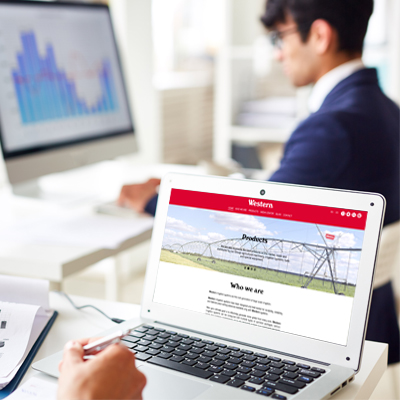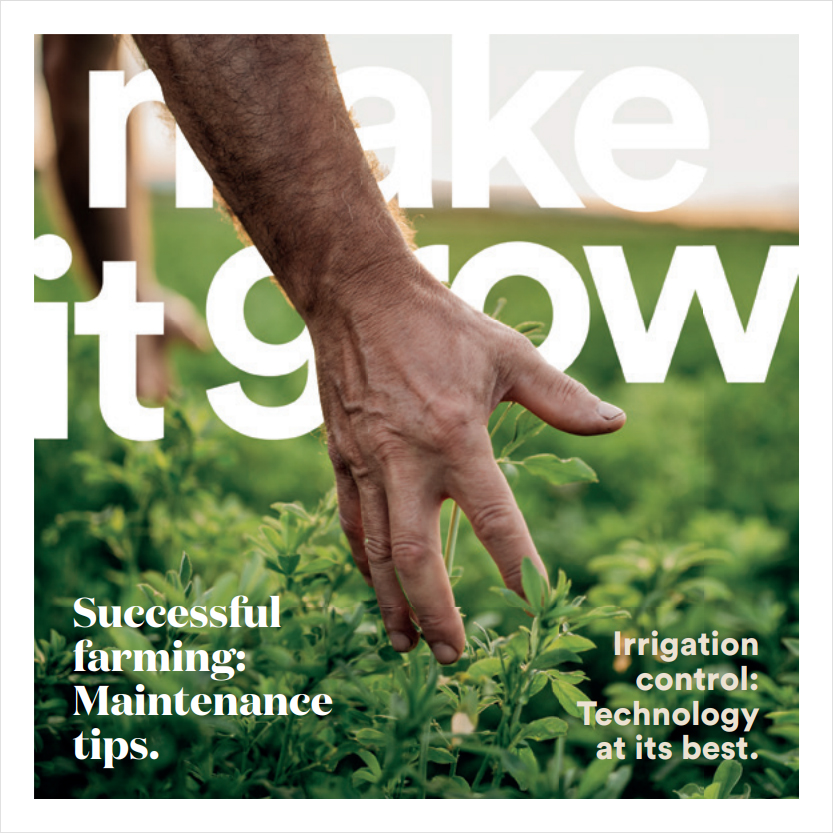
The Irrigation Applications management takes all measurements of the inlet discharge and pressure at the pivot point and pivot end.
Especially when the ground is uneven, where we take readings at the highest point. Preferably, this pressure value should be at least 5 PSI higher than the rated value of the pressure regulator, to ensure safety and proper operation, as the regulator must be replaced after 5 years of use.
The farmer must conduct all these operations before any agricultural season to make sure things will go well. The Irrigation Applications team follows the drop of water from the pump and through the main pipe to enter the center of the pivot system.
We take the behavior of the water inside the pivot into consideration, and the pressure right down to the end, whether it is distributed through the sprinklers to all parts of the land in the right way, bearing in mind the types of soil, crop and environment (selecting the appropriate sprinkler type).
At the other end, we monitor the water sprayed to the ground using the soil moisture sensor, measuring it to the depth required for the root zone to make maximum use of the irrigation water and what it may carry with it, whether fertilizers, pesticides or additives for the root area, and preventing deep percolation.
We also install the weather station on each farm to give the necessary data for the irrigation schedule, using these to calculate the evapotranspiration (ET0) of the farm, letting us know the real loss that we have to compensate for through the watering program for each crop.
Once we know the water application requirements of the crops through the weather station (ET0), this enables us to activate these quantities through the irrigation schedule, monitoring the water in the root zone, learning how this water moves and whether there is enough in the soil for the plant type, age and soil type.



